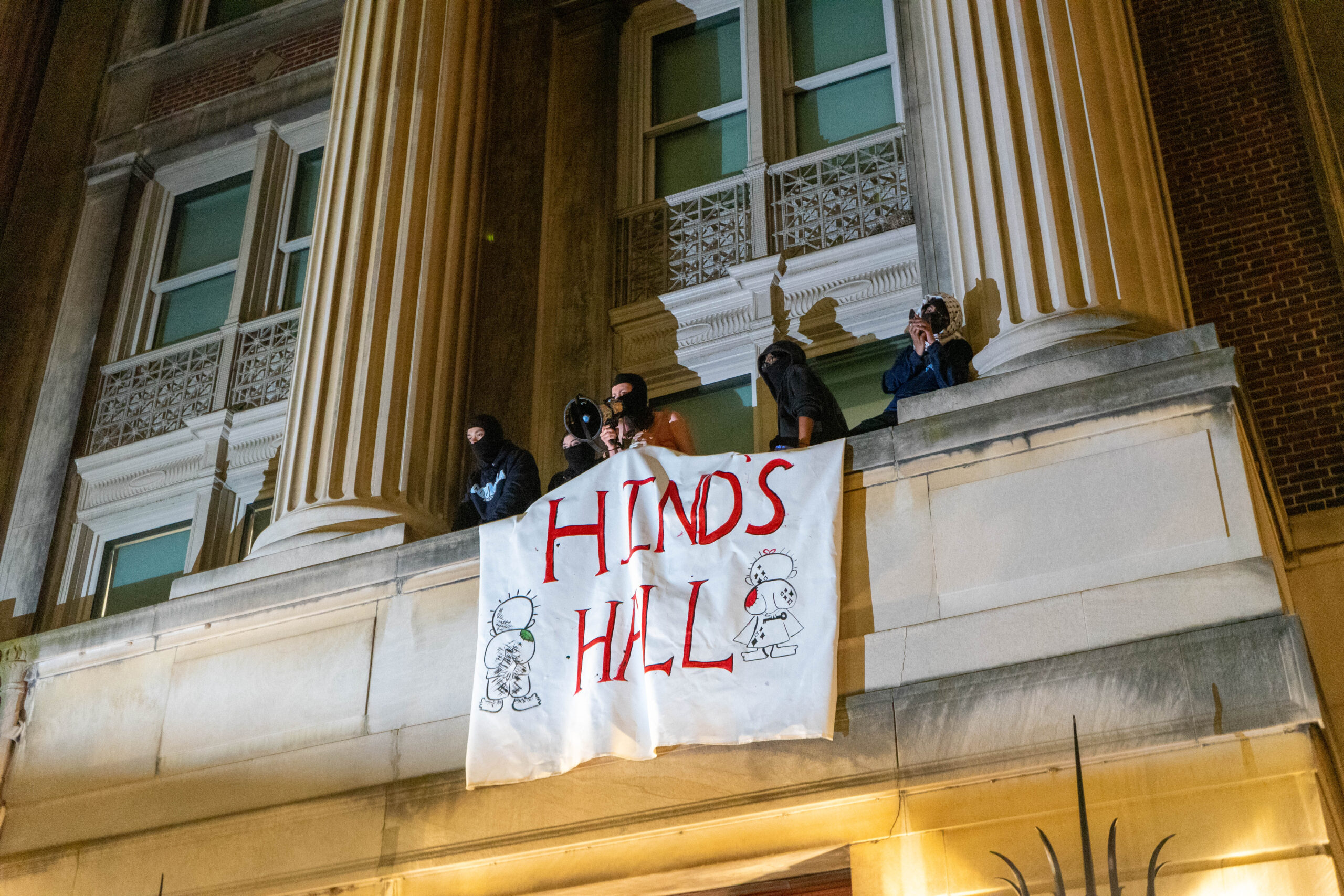Inside the Columbia protests: Students occupy building, university threatens to expel
The campus is on lockdown and non-student protests are happening outside Columbia's gates.

UPDATE: At roughly 9:30 p.m. on Tuesday, NYPD entered Columbia’s campus and arrested over 100 student protesters including those inside Hamilton Hall. The encampment has been disassembled and the campus remains on lockdown. Classes are expected to be remote through the end of the semester.
Student protesters on Columbia University’s campus entered and took over Hamilton Hall early Tuesday morning. Dozens of demonstrators brought in metal gates and furniture to barricade the building’s doors, while hundreds gathered in front of the historic building in support.
The pro-Palestinian student encampment first began on April 17, as student protesters erected tents on Columbia’s South Lawn in the early hours before President Minouche Shafik’s congressional committee hearing on the university’s response to antisemitism.

Brooklyn Boro
View MoreNew York City’s most populous borough, Brooklyn, is home to nearly 2.6 million residents. If Brooklyn were an independent city it would be the fourth largest city in the United States. While Brooklyn has become the epitome of ‘cool and hip’ in recent years, for those that were born here, raised families here and improved communities over the years, Brooklyn has never been ‘uncool’.